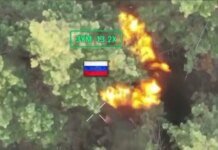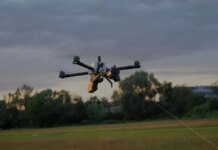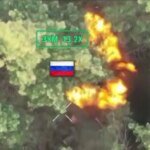In a comment to UNN, aviation expert Kostiantyn Kryvolap recalled that it was because of this missile that the United States withdrew from the Intermediate-Range Nuclear Forces Treaty between the USSR and the United States.

It recently became known that Russia launched the 9M729 cruise missile at least 23 times on the territory of Ukraine. As aviation expert Kostiantyn Kryvolap told UNN, this missile is being developed by the Russian enterprise NPO "Novator", which develops "Kalibr" missiles, which makes the specified missile almost analogous to "Kalibrs". However, unlike "Kalibr", the 9M729 can be launched from ground-based complexes.
Details
On October 31, Ukrainian Foreign Minister Andriy Sybiha announced that Russia had used the 9M729 ground-launched missile in combat operations against Ukraine.
Russia used the specified missile at least 23 times, and the first two launches were recorded in 2022.
As Western analysts note, the use of the 9M729 missile expands Russia's arsenal of long-range weapons for striking Ukraine and fits a pattern in which Moscow sends threatening signals to Europe at a time when Trump is seeking a peaceful settlement.
Russia attacked Ukraine with a missile that prompted Trump to withdraw from the nuclear treaty – Reuters31.10.25, 09:53 • 25937 views
In a comment to UNN, aviation expert Kostiantyn Kryvolap reminded that it was because of this missile that the United States withdrew from the Treaty between the USSR and the United States on the Elimination of Intermediate-Range and Shorter-Range Missiles, which was signed by General Secretary of the CPSU Central Committee Mikhail Gorbachev and US President Ronald Reagan in December 1987.
It should be noted that, in accordance with the treaty, its participants undertook not to produce, test, or deploy ground-launched ballistic and cruise missiles of intermediate (1000-5500 km) and shorter (500-1000 km) ranges. The parties were to destroy all ground-launched launchers and missiles with a range of 500-5500 km, including missiles in both the European and Asian parts of the USSR, within 3 years. This was the first agreement in history on the actual reduction of existing armaments.
In 2019, then-US President Donald Trump, during his first term in office, announced that the US would begin a six-month withdrawal period from the Treaty due to Russia's long-term violations of its terms, including the development and deployment of the 9M729 (SSC-8) missile system, which violates the terms of the treaty.
The 9M729 missile was such an official pretext for the termination of the INF Treaty, and then the Russians withdrew from this treaty. And in fact, they withdrew because of the "Rubizh" RS-26 – what later became known as "Oreshnik"
– said Kryvolap.
According to the expert, the development of the 9M729 cruise missile is carried out by the enterprise NPO "Novator", which develops "Kalibr" missiles. Unlike "Kalibr", which is launched only from ships, the 9M729 missile can be launched from ground-based complexes.
The 9M729 missile is also a development of the same enterprise, it has the same elements, but the only exception is that "Kalibr" missiles are surface-launched, and there are also submarine-launched ones.
– adds the expert.
Details of the "Oreshnik" elimination: the operation was carried out in 2023, information remained classified31.10.25, 15:46 • 2950 views
He notes that there are also reports that Russia could have launched not 23 missiles at Ukraine, but 50, for example, because it is difficult to distinguish where the 9M720 missile ("Iskander-K" missile – ed.) fell, and where the 9M729 missile fell, where the "Kalibr" fell.
There is nothing fundamental. Both "Kalibr" and this system, and "Iskander-K"… "Iskander-K", when it is launched at a short distance, we do not always have time to react to it and shoot it down. And the "Kalibr" missile, when it goes by sea, when we see it, when we know where it will enter, how it will go. We used to shoot down 10 out of 10. Now they have somewhat improved their control, and now it is not always 10 out of 10, but in general, it is not the most difficult missile, like, for example, the Kh-101.
– noted the expert.
"Mirror response to Russian missile strikes": ISW assesses prospects of US providing Tomahawk missiles to Ukraine01.11.25, 07:40 • 19929 views



































